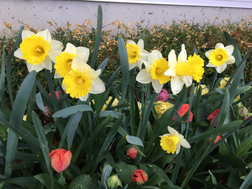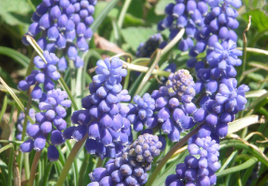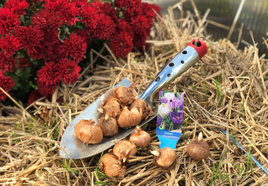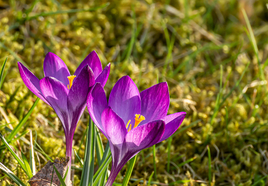Autumn is prime time for planting bulbs like tulips, daffodils, crocus and grape hyacinths. Planting bulbs in late autumn gives them time to set roots in advance of winter and prepare for the spring blooming season.
New to bulb-planting? Don’t be intimated as most are very easy to grow. Before you head to the garden centre, however, it pays to do a bit of homework by looking at the light conditions of your garden beds and buying bulbs that will thrive in those conditions.
Large flowering bulbs like ornamental onions are often planted as specimen plants as they add drama and height to the late spring garden, while small bulbs like glory-of-the-snow and snowdrops are used to add colour to a spring woodland garden.
While I love all the various types of bulbs that can be planted in autumn, here are four of my favourites bulbs that have proven to be very reliable in my garden.
1) Daffodils (Narcissi species)
There are so many reasons to love daffodils! First, most types, like the common trumpet daffodils are reliably perennial. Second, they’re resistant to deer, rabbits, and squirrels. And third, they’re long blooming, beautiful, and fragrant. Of course, there are many different types of daffodils you can plant besides the standard trumpets, including small-cupped, doubled, and split-cup. Also, don’t be shy about playing with the various daffodil colours available like white, orange, gold, and even pink. Just remember that daffodils need well-drained soil, like that in a raised bed, to thrive and return year after year.
2) Grape Hyacinths (Muscari species)
Grape hyacinths may be a commonly available bulb, but they’re anything but boring! They’re long-blooming, bee-friendly, deer-resistant, and perhaps the easiest bulb to grow. The deep purple flowers resemble clusters of grapes and are lightly scented. They also make long-lasting cut flowers when clipped and brought indoors. Plant them in groups of at least twelve bulbs for the biggest visual impact.
3) Ornamental onions (Allium species)
Ornamental onions are among the most popular spring-flowering bulbs for their show-stopping round blooms that are pollinator-friendly and deer-resistant. There are dozens of types to grow with a mixture of flower sizes, shapes, and colours, with most blooming in late spring through mid-summer. My top alliums include ‘Purple Sensation’, the classic large-flowering allium with four-inch diameter purple blooms that emerge in late spring, as well as 'Drumstick’, a mid-summer bloomer with two-foot tall stems topped with egg-shaped purple flowers.
4) Crocus (Crocus species)
Crocus are prized for their ease of cultivation and early season of bloom - in fact, they often pop up through the late winter snow! These cheerful small bulbs provide welcome yellow, purple, white, lilac, orange, and gold flowers just in time to kick off the arrival of spring. They return reliably year after year, even multiplying through garden beds. You can also naturalize crocus in a lawn by planting the bulbs in your grass.
How to plant spring-flowering bulbs
Pick the right time.
Most spring-flowering bulbs like tulips and crocus need to be planted about six weeks before the ground freezes. In Canada, this can range from September through November, depending on your individual region.
Plant bulbs in the right spot.
Certain bulbs, like tulips need full sun, while others, like snowdrops prefer partial shade. Match the bulb to the garden bed. Prep the site. It’s a good idea to prep the bed before you plant. Pull any weeds and loosen the soil, digging in a few inches of compost.
How deep to plant?
Plant small bulbs like snowdrops, crocus and grape hyacinths four to five inches deep. Larger bulbs like tulips, daffodils, and alliums should be planted about eight inches deep.
Plant in drifts.
Don’t plant bulbs individually around your garden as it doesn’t look natural. Instead, create eye-catching spring displays by planting bulbs in drifts, or groups. Large bulbs like alliums can be planted in groups of three to five, while medium-sized bulbs like tulips should be planted in groups of nine to twelve, and small bulbs, like crocus, should be planted in groups of twelve or larger.



